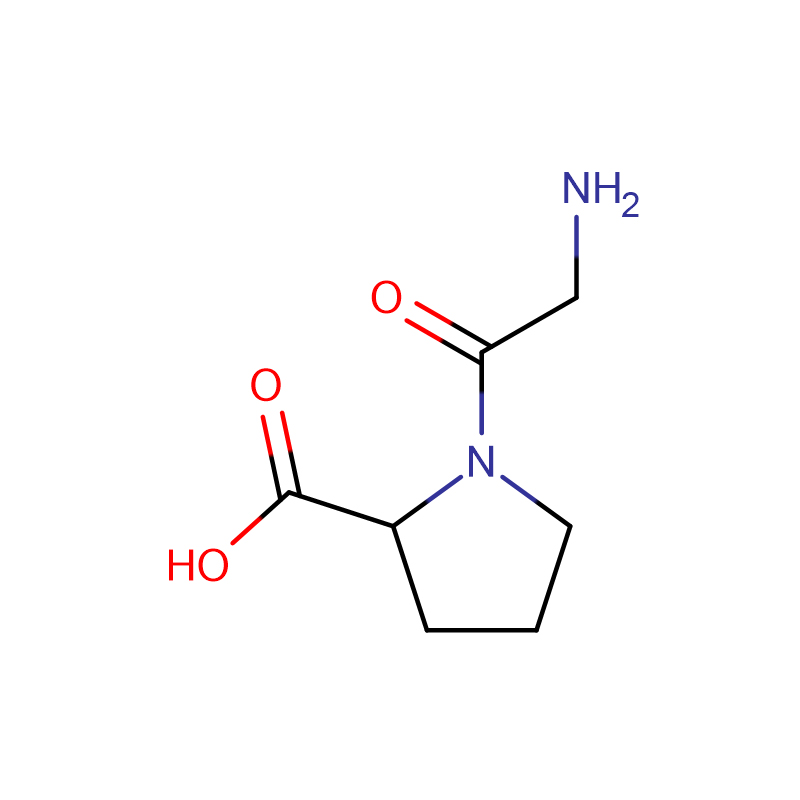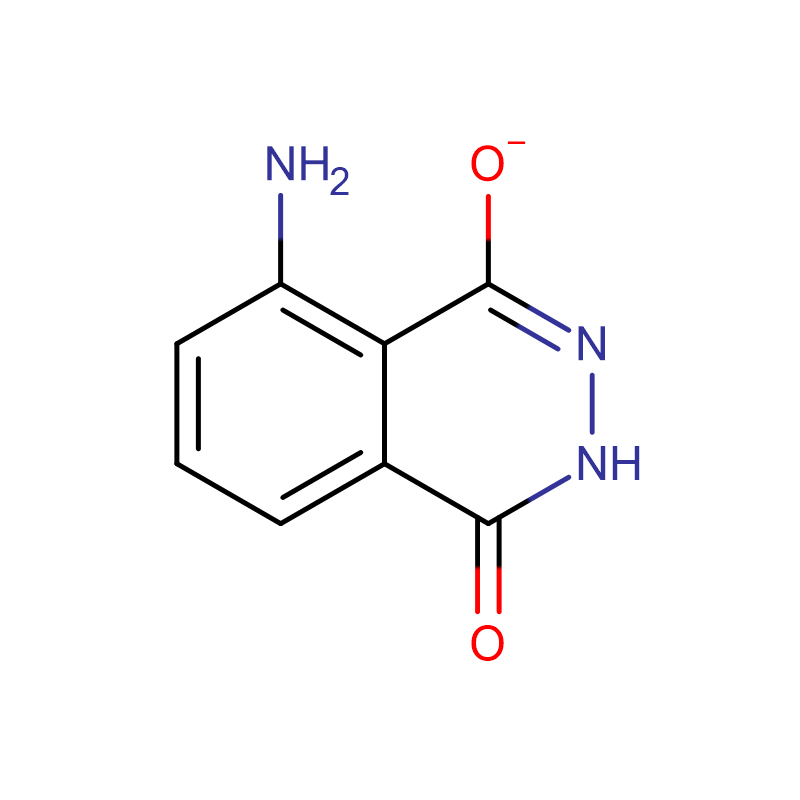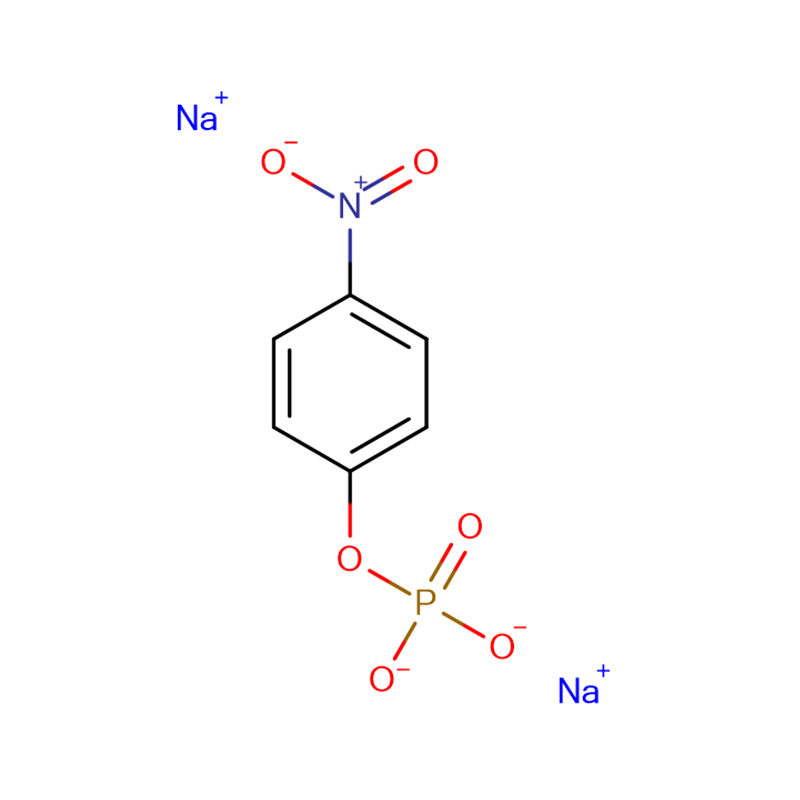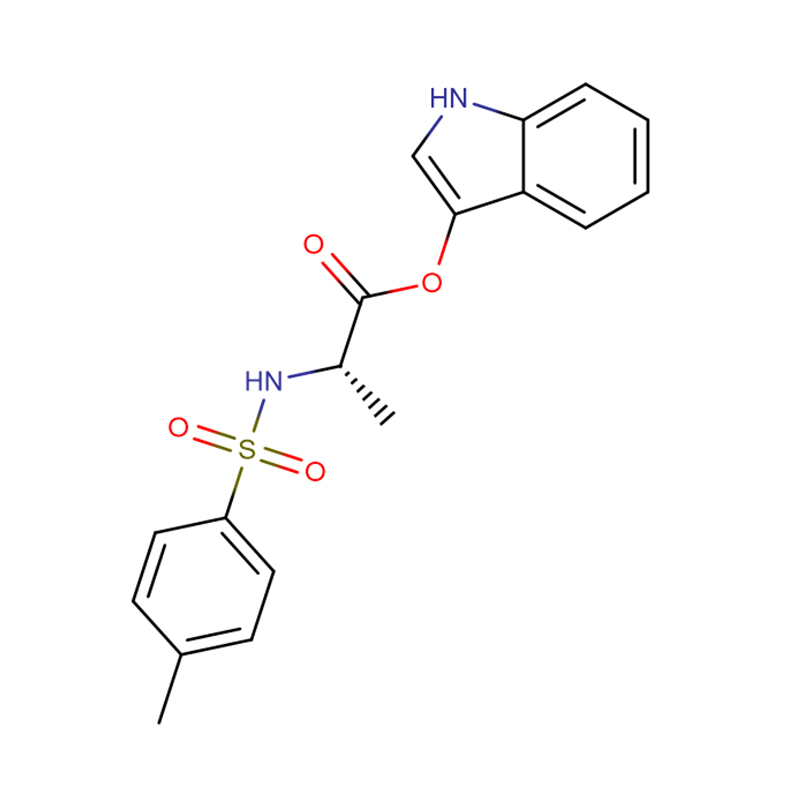GLYCYL-L-PROLINE Cas:704-15-4 99% White powde
| Catalog Number | XD90153 |
| Product Name | GLYCYL-L-PROLINE |
| CAS | 704-15-4 |
| Molecular Formula | C7H12N2O3 |
| Molecular Weight | 172.18 |
| Storage Details | Store at RT |
Product Specification
| Appearance | White powde |
| Assay | ≥ 99% |
| Density | 1.356±0.06 g/cm3 (20 ºC 760 Torr), |
| Melting point | 185 ºC |
| Boiling point | 411.3°C at 760 mmHg |
| Refractive index | -114 ° (C=4, H2O) |
| Solubility | easily soluble (260 g/L) (25 ºC), |
1.Metabolite profiling methods are important tools for measurement of metabolite pools in biological systems. While most metabolite profiling methods report relative intensities or depend on a few internal standards representing all metabolites, the ultimate requirement for a quantitative description of the metabolite pool in biological cells and fluids is absolute concentration determination. We report here a high-throughput and sensitive gas chromatography/tandem mass spectrometry (GC/MS/MS) targeted metabolite profiling method enabling absolute quantification of all detected metabolites. The method is based on methyl chloroformate derivatization and quantification by spiking samples with metabolite standards separately derivatized with deuterated derivatization reagents. The traditional electron impact ionization is replaced with positive chemical ionization since the latter to a much larger extent preserve the molecular ion and other high molecular weight fragments. This made it ea sier to select unique MS/MS transitions among the many coeluting metabolites. Currently, the novel GC/MS/MS method comprises 67 common primary metabolites of which most belong to the groups of amino and nonamino organic acids. We show the applicability of the method on urine and serum samples. The method is a significant improvement of present methodology for quantitative GC/MS metabolite profiling of amino acids and nonamino organic acids.
2.24S-Hydroxycholesterol (24OHC) and 27-hydroxycholesterol (27OHC) are two structurally similar oxysterols of different origins--the former almost exclusively formed in the brain and the latter formed to a lesser extent in the brain than in most other organs. HYPOTHESIS TO BE TESTED: Neuronal damage and/or demyelination causes increased flux of 24OHC from the brain into the cerebrospinal fluid (CSF), whereas a defect blood-brain barrier causes increased flux of 27OHC from the circulation into the CSF.Isotope dilution-mass spectrometry was used to assay the two oxysterols in CSF and plasma from more than 250 patients with different neurological and geriatric diseases.The CSF-levels of the two oxysterols were much more affected by the different diseases than the plasma levels. Patients with active demyelinating diseases had increased levels of 24OHC in CSF with a relatively high 24OHC/27OHC ratio. Patients with meningitis in general had high levels of both steroids with a low 24OHC/27OHC ratio. Patients with Alzheimer's disease had slightly increased levels of 24OHC in CSF with less increase in 27OHC. Patients with multiple sclerosis had a tendency to have higher levels of 24OHC during active periods with a high 24OHC/ 27OHC ratio.Measurements of the two oxysterols in CSF and plasma may add significantly to existing biochemical methods for evaluation of neurological diseases.



![VALINOMYCIN CAS:2001-95-8 White crystaline powder Akis(1-methylethyl)-[qr]](https://cdn.globalso.com/xdbiochems/2001-95-8.jpg)



![2-[2-(4-hydroxy-3,5-diiodophenyl)ethenyl]-3,3-dimethyl-1-(3-sulfopropyl)-, inner salt CAS:145876-11-5](https://cdn.globalso.com/xdbiochems/145876-11-5.jpg)